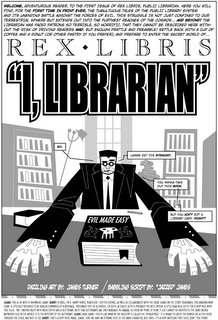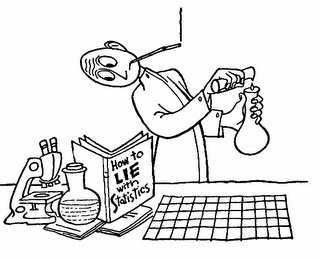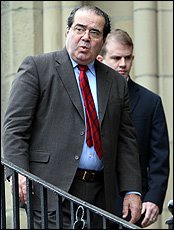
With the passage in December of HR 4437, the climate in the
United States seems poised to move markedly chillier for
immigrant peoples of all types, and illegal immigrants in particular.
Here are some highlights trumpeted on the webpage of
Congressman Miller:
The bill includes such measures
as enlisting military and local law enforcement
help in stopping illegal entrants, requiring
employers to verify the legal status of their
workers and building 700 miles of fencing along
parts of the 2,000-mile U.S.-Mexico border.
It did not include President Bush's sought
after guest-worker program, which is strongly
opposed by Mr. Miller.
Highlights include:
Penalties for Hiring Illegals: Requires employers to
verify Social Security numbers for all workers and
boosts fines for businesses who hire illegal
immigrants. Fines for the first offense would be
between $5,000 and $7,500, fines for the second
offense would be between $10,000 and $15,000, and
all subsequent offenses would result in fines
between $25,000 and $40,000.
End “Catch and Release” Policy: Requires illegal
immigrants apprehended at U.S. borders to remain
in custody until removal from the country and
provides quicker deportation of illegal immigrants
from countries other than Mexico . The measure ends
the "catch and release" procedures currently in place,
under which non-Mexican illegal immigrants are
released and told to return for a U.S. court appearance.
Border Fence: Requires the construction of 700 miles
of security fencing, including lights and cameras,
along certain ports of entry along the U.S.-Mexico
border. Such fencing would be constructed in areas
that have high numbers of immigrant deaths, high rates
of drug smuggling, and high rates of illegal
border-crossing. The bill also requires the Homeland
Security Department to conduct a study into the use
of physical barriers, such as fences, along the
U.S.-Canada border.
Additional Border Security: Requires the Homeland
Security Department, subject to the availability
of appropriated funds, to add an additional 250
inspectors at ports of entry each year from 2007 to
2010, and it requires the department, as appropriated
amounts are available, to increase the number of
canine units at ports of entry and along the border
by 25 percent each year from 2007 to 2011.
Criminal-Related Policies: Blocks admission for
individuals who are members of certain criminal street
gangs, or who intend to enter the country for the
primary purpose of engaging in gang crime. It allows
the government to deport criminal gang members, deny
members asylum and requires detention of gang members
illegally in the country. The bill also expands the
number of crimes for which immigrants could be deported.
Penalties for Marriage: Sets penalties — including
fines, up to 10 years imprisonment, or both— for
knowingly misrepresenting a marriage in an immigration
document or during an immigration proceeding, and
provides fines and sentences of between two and 20
years for individuals who enter into two or more
marriages to evade immigration laws, as well as those
who facilitate or arrange such marriages.
Re-Entry Penalties for Felons: Changes the
maximum prison terms for aliens who commit
offenses and try to re-enter the country. If
they were sentenced to at least 30 months for
felony conviction, the maximum sentence for
re-entry would be 10 years; if they received
a sentence of 60 or more months for their felony,
they could be imprisoned for up to 20 years.
Document Fraud: Increases penalties under current
law for passport and immigration fraud and makes
passport fraud grounds for inadmissibility to the
country or removal from the country. For anyone
who knowingly creates, sells, possesses, uses or
transports at least 10 fake passports or passport
applications, it authorizes a prison term of
between three and 20 years. For fraud related to
fewer than 10 passports, it allows a sentence of
up to 15 years in prison. It set a sentence of up
to 15 years in prison for false statements related
to passport applications. Also creates a new
forensic document laboratory to collect and analyze
information about the production, sale and
distribution of fraudulent documents intended to
be used to enter, travel or remain unlawfully in the
United States.
Day-Laborer Sites: Prohibits local governments
from requiring businesses to set up day-laborer
sites as a condition for conducting or expanding
their businesses.
Border Intelligence Coordination: Requires the
Homeland Security Department and the director of
national intelligence to establish a joint two-year
Red Zone Defense Border Intelligence pilot program
to improve coordination and management of intelligence
and homeland-security information used by the
department on the southwestern border.
Local Enforcement of Immigration Laws: Allows
local sheriffs, or coalitions of sheriffs, in
counties within 25 miles of the U.S.-Mexico border,
to detain illegal immigrants and transfer them
to federal custody. It authorizes $100 million
per year for the federal government to reimburse
sheriffs for costs of detaining, housing and
transporting illegal immigrants. It also requires
the department to provide training at no cost to
local and state law enforcement in as many means
as possible and requires development of a training
manual.
Additional Funding: Authorizes $1 billion each year
for the State Criminal Alien Assistance Program,
$250 million annually for a new grant program to
help state and local governments cover the costs of
housing and processing aliens and a total of $650
million over the five-year period from 2007 through
2011 for the Institutional Removal Program, which i
identifies and provides removal for criminal aliens
in correctional facilities.
This is not a bad summary of the bill's highlights. You can get the full text (very long!)and a less dramatic summary of the bill from a Congressional Research Office document at Thomas
here. I must say I, living in the northeast, was shocked that folks wanted to build a fence across our border with Mexico. How much of my youth had the Berlin Wall been held up to me as a symbol of a failed system of government? Of course, that was was for keeping citizens inside and this is for keeping people out. Still, it sends a shiver up my spine. Here is the info on the bill:
H.R.4437
Title: To amend the Immigration and Nationality Act to strengthen enforcement of the immigration laws, to enhance border security, and for other purposes.
Sponsor: Rep Sensenbrenner, F. James, Jr. [WI-5] (introduced 12/6/2005) Cosponsors (35)
Related Bills: H.RES.610, H.RES.621, S.2454
Latest Major Action: 1/27/2006 Referred to Senate committee. Status: Read twice and referred to the Committee on the Judiciary.
House Reports: 109-345 Part 1
One can see that the bill is largely focusing on Hispanic
immigration through the Mexican border. Hispanics felt the slap
of the bill and responded in March, as the Senate proceeds on
deliberations. They demonstrated across the country:
Immigration bill sparks protests, Bush plea
By Caren Bohan | March 25, 2006
WASHINGTON (Reuters) - Thousands of
demonstrators in California protested
moves to impose stricter U.S. immigration
laws on Saturday, while President George
W. Bush urged wary Republicans to take
up his guest-worker proposal.
More than 10,000 immigrants and their
supporters clogged the streets in front
of Los Angeles City Hall to protest a
proposed law they see as punitive to
undocumented workers.
"This bill is wrong because this is a
country for everybody who wants to live
a better life and this is a free world,"
said protester Lionel Vanegas, who owns an
accounting firm.
On Friday, as many as 15,000 marched in
Phoenix in a similar demonstration.
Bush weighed in on the heated immigration
debate in his weekly radio address as the
Senate was days away from taking up
legislation on the subject.
The president favors including a temporary
work visa in broad legislation that would
also bolster border enforcement.
But some Republicans view the guest-worker
plan as a back-door amnesty for illegal
immigrants and prefer an approach that focuses
solely on toughening border security and
cracking down on illegal immigration.
Bush, who this week urged all sides to tone
down their rhetoric in the emotional debate,
said securing borders was a top priority of
immigration reform but invoked the country's
history as "a nation of immigrants" to argue
for a balanced approach.
"As we debate the immigration issue, we must
remember there are hardworking individuals,
doing jobs that Americans will not do, who are
contributing to the economic vitality of our
country," Bush said.
POLITICAL PRESSURES
Senate Judiciary Committee Chairman Arlen
Specter wants to finish work on legislation
that includes a temporary worker program and
would give undocumented aliens an opportunity
to legalize their status.
The Pennsylvania Republican is working against
a deadline set by Senate Majority Leader Bill
Frist, a Tennessee Republican and potential 2008
presidential candidate. Frist plans to bring to
the Senate floor his own border-enforcement
immigration bill if the Judiciary Committee fails
to pass legislation.
The panel is to meet on Monday in hopes of rushing
legislation to the floor before Frist brings up his
own bill.
Meanwhile, Bush is leaving on Wednesday for
meetings in Cancun with Mexican President
Vicente Fox, who has been disappointed by Bush's
failure so far to achieve progress on the guest-worker
program. Mexico took out full-page ads in U.S.
newspapers this week promoting the guest-worker idea.
Immigration is looming as a key issue in the
November midterm elections in which Republicans
are seeking to hold on to their majorities in
both houses of Congress.
But the politics of border security have
created competing pressures for Republicans.
Bush views the guest-worker program as way of
courting Hispanic voters in key states like
Arizona, New Mexico and Florida. But some
conservative Republicans are focusing on
enforcement as constituents vent frustration
at what they see as a strain on schools,
hospitals and other local resources from
illegal immigration.
Although the guest-worker plan would offer
the estimated 12 million illegal immigrants
a chance to register and work in the
United States for up to six years, Bush
rejected any description of it as an
amnesty plan.
"I believe that granting amnesty would be
unfair, because it would allow those who
break the law to jump ahead of people who play
by the rules and wait in the citizenship line,"
Bush said.
© Copyright 2005 The New York Times Company
Online Boston Globe Story
hereBut while the bill clearly is most focused on the Mexican border
and Hispanic immigrants, other immigrant groups are aware that
they will be affected as well:
Irish-Americans lend voices to the immigration law debate
By Rick Klein | March 8, 2006
WASHINGTON --More than 2,400 Irish-Americans
descended on the nation's capital today, lending
their voices to the rollicking debate in
Congress over the nation's immigration laws.
The lobbying by Irish-American groups,
including a large contingent from Boston,
reflects an attempt to reframe the issue of
immigration at a key time. Though the issue
has been broadly perceived as mainly affecting
Hispanic immigrants, the Irish community wants
to remind lawmakers that the economy also
depends on the huge number of undocumented
immigrants from Ireland -- estimates run from
20,000 to 50,000 -- who work in Boston and
cities across the country.
This week, the Senate Judiciary Committee
is debating a bill that would overhaul the
nation's immigration laws, through stronger
border enforcement and new legal channels for
immigrants to work in the United States. The
latest draft would allow undocumented
immigrants who come forward to live legally
in the US for as long as they have jobs, but
would give them no special treatment if they
want to become citizens.
Many immigrant groups are supporting a proposal
that would give undocumented immigrants a new
path to obtaining permanent legal status. Under
that proposal, crafted by Kennedy and Senator
John McCain, an Arizona Republican, undocumented
immigrants who pay $2,000 in fines could apply
for green cards after six years of good behavior,
instead of the decades they could be forced to
wait through existing channels.
The proposal is so intriguing to many Irish
that Ireland's government has taken the unusual
step of endorsing the proposal, as a way to allow
undocumented immigrants to visit family and
friends back in Ireland. Prime Minister Bertie
Ahern of Ireland plans to mention the Kennedy-McCain
bill in his meetings with President Bush and top
congressional leaders next week, said Joe
Hackett, a spokesman for the Irish embassy
in Washington.
"The government has thrown its full weight
behind the Kennedy-McCain," Hackett said.
"Because of immigration law, they’re not able
to travel back and forth for family events and
weddings. This provides the undocumenteds who
are hear a path to permanent residency, without
them having to leave the country."
Online Boston Globe story
here.
So, not all illegal immigrants are Hispanic. However, currently Mexican
immigrants far outstrip the closest three groups by a large margin.
According to a study done in 2002 by Steven Camarota at the link given below, Mexico provides 29.8% of the immigrant population, where the next four immigrant groups: China (Taiwan/HK), Phillipines, India, and Cuba together make up less than 16%.
This is an interesting study of the countries of origin for the largest immigrant pools. It is included as part of a report within an excellent website from a non-profit organization studying all aspects of immigration. A very good resource.
Report here.
It does seem to be true, according to the reports at this website, that immigrants use more social services, on average than native-born citizens. The studies seem to do a careful job looking at the demands immigrant populations put on local schools and welfare systems. This is where a great deal of the uproar about immigration pressure is coming from, I think. But much of the pressure about illegal aliens and the focus on Mexican immigration in particular is not entirely rational. Immigrants as an undifferentiated group over history, have contributed great things to this country. Hispanics and Mexicans in particular have already brought us much good, and are contributing as good citizens.
Undocumented workers -- migrant workers, field laborers do work that American citizens are not willing to do. If they disappeared, there are many important tasks that would not be done -- crops would not be harvested. A good number of child care workers would disappear. Many construction workers would fade away and many jobs would become more expensive to accomplish. Perhaps that would be a better thing in the long run. These people work for us without proper compensation. They contribute to the economy while getting very little back out of it.
Undocumented workers, illegal immigrants are at extreme risk for human rights abuses. They are afraid to complain and because going to authorities exposes them to immigration processes, they are most unlikely to ask for help. When you read stories about modern day slavery, the people most likely to be involved are illegal immigrants:
Human trafficking a local problem, outreach workers say
By Ken Maguire, Associated Press Writer | March 25, 2006
BOSTON --Victims of human trafficking are everywhere,
as close as your neighbor's house or your local coffee
shop, but at the same time they are virtually invisible,
outreach workers said Saturday.
"In the media, most of what we hear tends to be the
sensationalized stories," said Carol Gomez, director
of the Cambridge-based Trafficking Victims Outreach
and Services Network.
Gomez was among the speakers at the In Our
Backyards conference at Simmons College, an event
to raise awareness and propose solutions, such as
new laws to protect victims, who can be anyone
from household domestic workers to prostitutes.
Many are illegal immigrants who don't turn to
authorities out of fear of arrest
or deportation.
The Labor Department defines human trafficking
as recruiting, transporting, providing or
obtaining any person for forced labor,
slavery or servitude in any industry.
Most of Gomez's cases, however, fall into a
"very gray area." About 30 percent of her cases
are domestic servants, while another 20 percent
are mail-order brides. They also work in
sweatshops, in construction and in the fishing
industry.
Two years ago, a woman from India claimed she
was held captive by a Brookline couple who brought
her here as a nanny, held her passport and forced
her to work for $3 per day. A neighbor helped her
find a shelter. She sued the couple and settled
out of court.
In January, a Connecticut businessman pleaded
not guilty to charges of recruiting Portuguese
immigrants to work long hours for low wages in
his Dunkin' Donuts shops and home. Jose Calhelha,
46, faces up to 70 years in prison if convicted.
Gomez said immigration laws should be relaxed
to allow victims access to help without fear of
prosecution or deportation.
"Fear will keep the sweatshop worker from even
considering reporting to the police, or telling
a social worker ... what they go through,"
Gomez said.
Young prostitutes also too often face prosecution,
said Ra'shaun Nalls, a Boston outreach worker.
One of his clients was arrested 17 times before
her 18th birthday.
"Johns," meanwhile, get a slap on the wrist,
he said. Men who seek out prostitutes need to
face tougher penalties, but Nalls said he's
pessimistic.
"They're influential. They're our teachers,
they're our principals, they're our doctors,"
said Nalls, outreach worker for the Boston
program called A Way Back, which steers teenage
girls toward social service programs.
The average age of a girl entering prostitution
is 13, he said. Most have been sexually abused
and are from all racial and socio-economic backgrounds.
Most prostitution doesn't fit the Hollywood
stereotype of street-walking girls handles by
pimps wearing flashy clothes and driving oversized
Cadillacs.
"It's more hidden. It's something that's
happening in hotel parties," he said.
"The average pimp right now is about 19-20
years old, wearing a baseball hat, Timberlands
and baggy jeans," Nalls said. "They're
not these fly guys with expensive clothes."
Nalls' group works with referrals from the
Department of Social Services, which has
referred 83 girls in the past three years. There
are many more, he said, but getting to them
is difficult because pimps "trade" girls
between cities.
"They trade these girls like they're cards,"
he said.
Breaking up child prostitution rings has been
a federal law enforcement priority since 2003
with the advent of the Justice Department's
Innocence Lost Initiative.
In December, prosecutors announced arrests in
prostitution rings from New York to Hawaii that
forced more than 30 children as young as 12 to
have sex at truck stops, hotels and brothels.
Thirty-one people were indicted.
© Copyright 2005 The New York Times Company
Online Boston Globe story
here.
So it appears that the country is in another pendulum swing, where the folks already here get all paranoid about how many strangers are knocking at the door. They are different from "us." And it makes us uneasy. So we pass laws, as we have in the past, to limit how many of "them" can get in to disrupt our nice place. We forget what a short time ago we were "them" (at least most of us). There were laws limiting the number of Chinese that could immigrate.
There have been strict limits on most groups coming into the United States. And now, we are trying to limit Mexican and other Hispanics. Too late. They will be the majority in this country within a decade whether we limit their immigration quotas or not, whether we limit undocumented workers or not. Just by the patterns of family size, Hispanics are going to be the largest single language and ethnic group in the United States within a decade. According the the 2000 Census Bureau
Brief The Hispanic Population, the Hispanic population as an entire group grew from 1990 to 2000 at a rate of 57.9% compared to an overall increase in the total United States population of 13.2%, and varying percentages by ethnicities, but none approaching the Hispanic rate. The
Boston Globe ran an article in 2004 about the changes in Miami, Florida as that city became more and more Hispanic:
In Miami, Hispanic majority takes hold
Assimilation issues are raised
By Sharon Moshavi, Globe Correspondent | October 17, 2004
MIAMI -- Maria Burford lives in the United States but it doesn't feel that way to her. In shops and restaurants, the clerks speak to her in Spanish, although she doesn't understand a word. Her neighbors all speak Spanish, too, and they make her feel like a foreigner. It's not simply that she has trouble communicating; it's how they treat her. ''They come up to me, and when I don't speak Spanish, they give me a little attitude," she says.
Burford can't wait to leave Miami, which she, her husband, and their 13-month-old son plan on doing in a few years as soon as their condominium appreciates in value. They won't be alone. More than 100,000 whites have left in the past decade and continue to leave.
This is the reality of life in Miami for many whites, who are referred to by the city's dominant Hispanic population -- and increasingly by themselves -- as Anglos. It is a Miami where business is conducted in Spanish, menus are in Spanish, the most popular radio and television stations are broadcast in Spanish, and the dominant political class speaks Spanish. It is a Miami with more than one multimillionaire who doesn't speak a word of English. And it is spreading its influence throughout the state as many Hispanics migrate north.
It is also a Miami that Harvard professor Samuel Huntington thinks is a harbinger of things to come in America. In his book ''Who Are We?" Huntington portrays Miami, which is 60 percent Hispanic, as a city that has been Hispanicized ''without precedent in the history of major American cities." Other cities could follow suit, he warns, and will form a kind of parallel America, one ''with economic and political resources sufficient to sustain its own Hispanic identity apart from the national identity of other Americans and also able to influence significantly American politics, government, and society."
Huntington says he thinks Hispanics are different from previous waves of immigrants. They are not assimilating, he says, in part because of their large numbers and their proximity to their native countries. He worries that they have a dramatically different culture and values that will erode America's core identity, which he sees as based on Anglo-Protestant values. He foresees an America that is bilingual and bicultural, a loose confederation with little to unify it.
Not surprisingly, Huntington's views have angered many in Miami's Hispanic population. ''It's sophisticated racism," said Joe Garcia, a leader in the Cuban-American community. Hispanics are assimilating, both culturally and linguistically, Garcia asserts. A prime example, he says, is that he does not speak Spanish as well as his father, and his daughter does not speak it as well as he does.
Some historians note that previous waves of immigrants to the United States, including Italians and Eastern European Jews, have provoked similar fears, and they turned out to be unfounded. In 1751, worried about German immigration, Benjamin Franklin wrote, ''Why should Pennsylvania . . . become a Colony of Aliens, who will shortly be so numerous as to Germanize us instead of our Anglifying them, and will never adopt our language or customs, any more than they can acquire our complexion."
In fact, says Thomas Boswell, a professor of geography at the University of Miami, the city's Hispanics are assimilating, just as German immigrants did in the 1700s. In a recent study examining six indicators of assimilation, including migrants' rate of citizenship, whether they lived in a mixed neighborhood, language, and marriage, he found that Hispanics are acculturating.
Boswell found, for example, that second-generation Hispanics are more comfortable speaking English than Spanish. More importantly, Boswell found what he described as a ''fair amount" of marriage between Hispanics and non-Hispanics. ''Some say that's the acid test of assimilation," he said.
Victoria Rovirosa, 23, has passed that test, then. Born to a Cuban father and American mother, she grew up surrounded by Cuban family and friends, but she is also more comfortable speaking English than Spanish. She attended the University of Georgia, married an Anglo, and now lives in Atlanta.
''I don't think I've ever even dated a Hispanic. I never wanted to," she said. ''Hispanic men have this attitude that a woman's place is in the kitchen. That kind of bothers me."
There is little chance that she will move with her husband to Miami because he doesn't think he could get a good job here. ''He knows he would be kind of an underdog because most people speak two languages," she said.
Miami continues to experience successive waves of new immigrants, particularly from Latin American countries other than Cuba. More than two-thirds of Hispanics in Miami are foreign-born, compared with a national average of one-third. These new immigrants will determine how much the city of Miami assimilates, says Alex Stepick, director of the Immigration and Ethnicity Institute at Florida International University. ''The speed of immigration will be what keeps the differences alive," he said.
And what does that mean for Miami's Anglo minority? Stepick says their only option is to embrace the changes and the language, what he calls ''acculturation in reverse."
Most Anglo Miamians have opted to flee instead, heading north to Broward and Palm Beach counties, or leaving South Florida altogether. From 1990 through 2000, Miami-Dade County had a net loss of 119,000 whites, and they're still leaving, specialists say.
The exodus is futile, Garcia says. ''If you moved to Broward 10 ten years ago, guess what? We're there, too," he said. ''If you moved to Palm Beach County five years ago, guess what? We're there now, too." As for the non-Hispanics who remain in Miami, they still refuse, for the most part, to learn Spanish. ''There is resistance to learning it and resentment at having to learn it," said Marvin Dunn, a community psychologist who has tried in particular to encourage African-Americans to learn Spanish to improve their job prospects.
Then there are those like Jim Hoover, a 27-year resident of Miami who has made peace with his decision to stay. He does not speak much Spanish but is not bothered by hearing it around him. He likes the flavor of life here. ''Miami fits into my diversity plan," he said. ''I get sick of meat and potatoes."
The struggle over Miami's identity might best be summed up by dueling bumper stickers. As the Hispanic, in particular Cuban, population soared in the 1980s and '90s, some cars began to sport this slogan: ''Will the last American to leave Miami please bring the flag."
Since then, someone came up with a response and printed it on another bumper sticker. That one says, ''Don't worry, the flag and your job will still be here when you get back."
Boston Globe online
here.
















